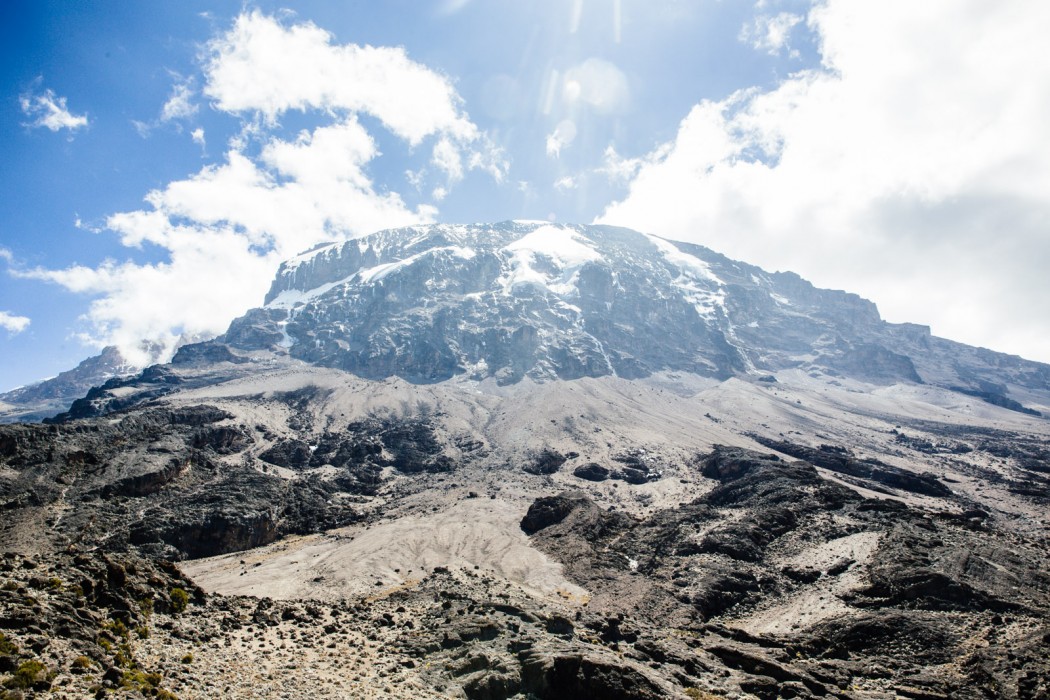As wide as all the world, great, high, and unbelievably white in the sun…”
ERNEST HEMINGWAY, ‘THE SNOWS OF KILIMANJARO’
Just below Stella Point, the first of Mount Kilimanjaro’s two summits, it happened. After struggling uphill in the darkness for nearly 6 hours, shaky-legged, breathless, and nearly numb from the cold, my concerned guide took a long look at my face. “Your skin is turning a bit blue around your eyes. How do you feel?” he asked. I was done and ready to quit the mountain. “Tired,” I answered, slumping down on rock. My eyes drifted upwards, focusing on what looked like an impossibly far summit. I wanted to finish this trek and so badly wanted to say I’d conquered legendary Kilimanjaro, but Kili was killing me. My vision blurred.
So why was I even attempting this incredibly challenging journey? Simply because there’s no mountain on Earth with quite the aura of Mount Kilimanjaro. As the world’s tallest freestanding peak, Kilimanjaro captures the imagination with a power akin to mighty Mount Everest. Like famous fellow freestander, Mount Fuji, the sight of it inspires. Hemingway’s famous short story has enthroned Kilimanjaro — and its snows — in romantic history. The Lion King offers it homage in the famous song, “Circle of Life”. And Kilimanjaro’s very location, encircled by safari-land, promises adventure.
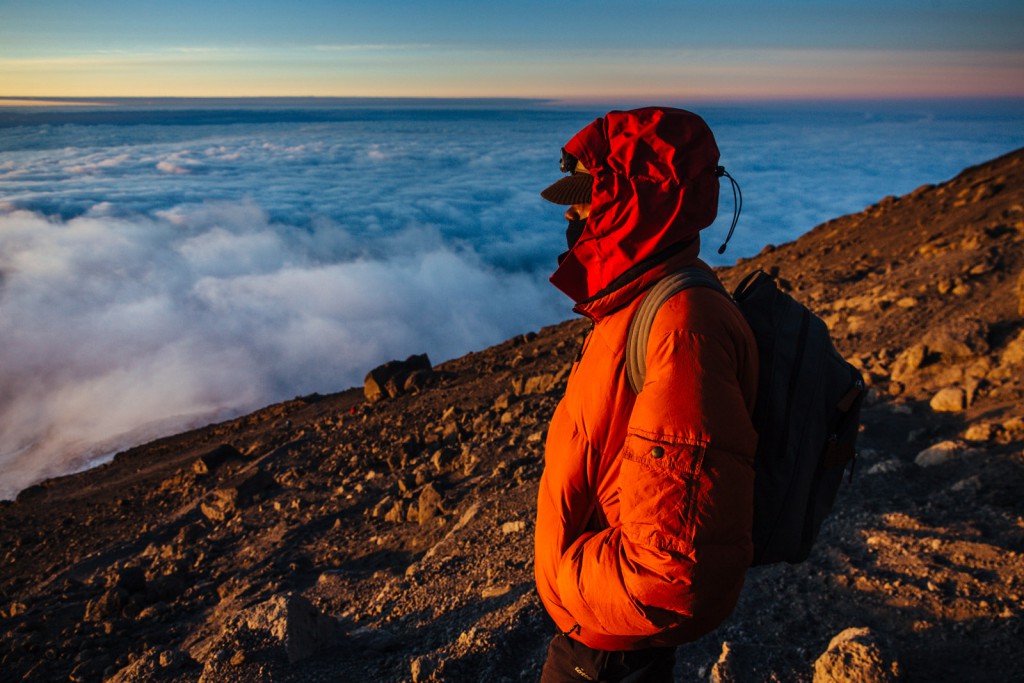
Better yet, Kilimanjaro is considered a ‘walkable’ mountain, the easiest to bag of the Seven Summits — the highest mountains on each continent. No ropes, carabiners, crampons, or special skills are required for this massif. It’s one tough trek, sure, but it’s still just a trek. With approximately 50,000 people working their way to the peak each year, it’s become the ‘everyman’s climb’. Still, this ‘easy’ mountain has a success rate that only hovers between 50-70 per cent.
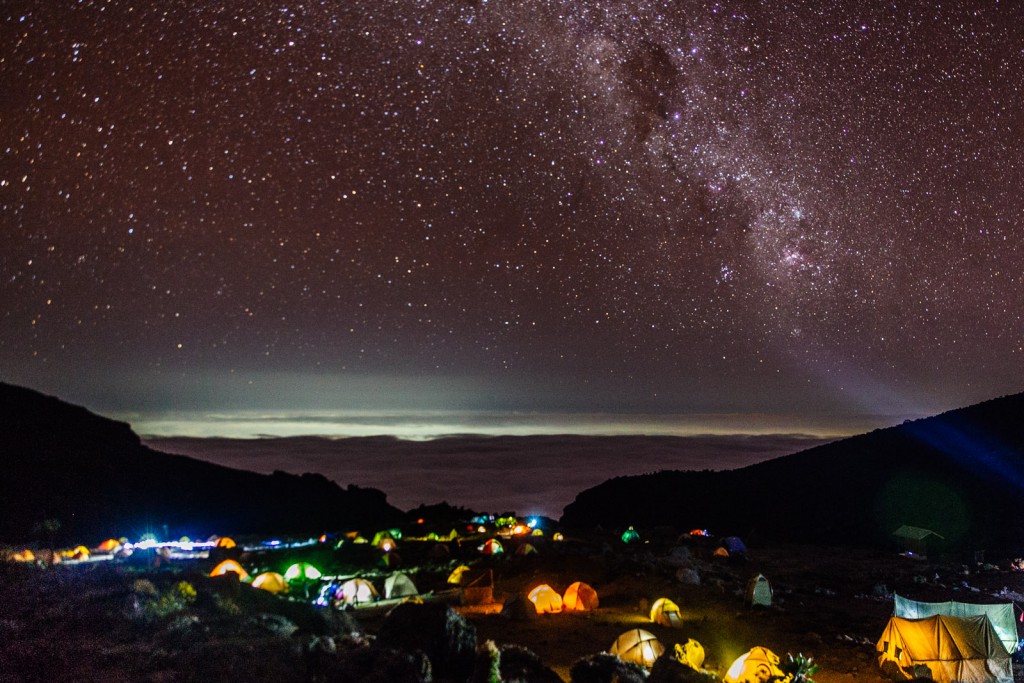
I had started this journey determined to beat those odds, though at this point things weren’t looking good. But suddenly a yellow mask dangled in front of my face, attached with tubes to a silver tank. Oxygen. The very thing missing up here in this rocky, windy wasteland called the alpine desert. The lack of which was causing the blue cast around my eyes. I strapped it on, and sucked in lungful after glorious lungful. The stuff worked like magic. I got to my feet.
Some say that climbing Kilimajaro is like walking from the equator to the North Pole in a few days. It’s a pretty accurate comparison. On the seven-day Machame trail, considered the most scenic of the routes, the trek begins in a misty, humid jungle filled with bird and monkey calls — a far cry from the barren, icy top. All that beautiful greenery gives way to a rockier landscape at Machame Camp (2850 metres), the first stopover. This was the point that my husband and I initially met our entire team from the Arusha-based boutique company Amani Afrika, the 17 people in charge of getting us up and down the mountain. The sheer number enlisted in support for two may sound excessive, but carrying basic shelter, bedding, food for three solid meals each day, plus cooking equipment and safety kits is no small task. Our guides, Zawadi Malisa and Raymond Thomas, took turns walking with us pole-pole (slowly-slowly) — important for proper acclimatisation — while the rest of the strong-legged team bypassed us, carrying gear balanced on their heads. Among the supplies were our own small toilet (a luxury item amid the mountain’s pit latrines) and the emergency oxygen tank that I came to rely on during summit day.
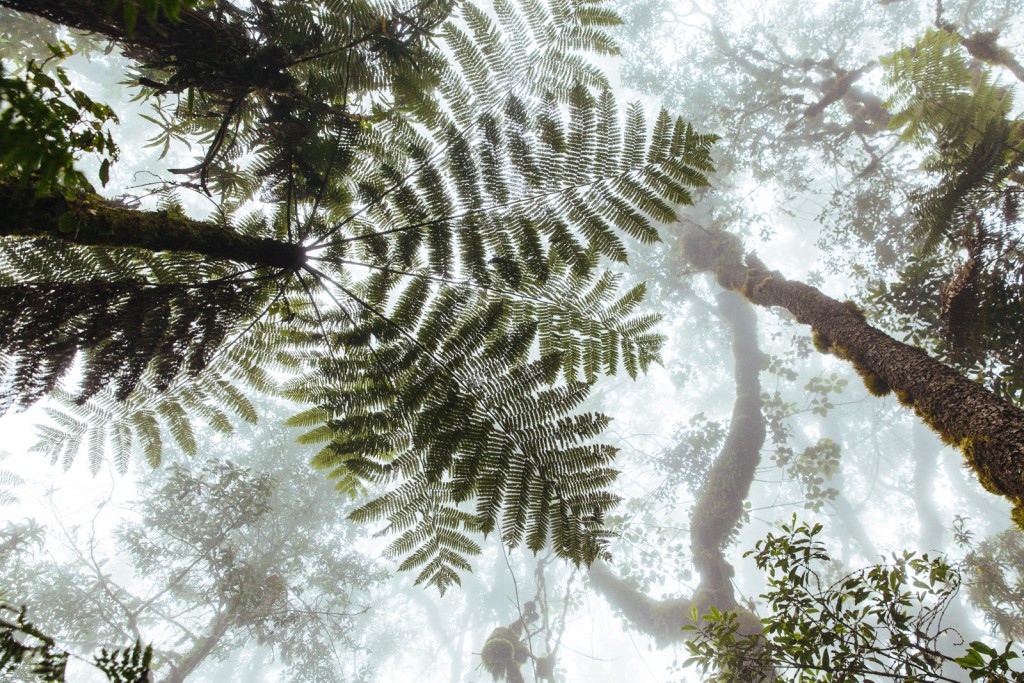
Few teams carry oxygen bottles up Kilimanjaro due to the extra cost. It’s US$100 to rent the tank, plus the salary of a porter to carry it to the summit. This may sound like chump change, but considering that most porters only earn between US$5–10 per day on the mountain (plus tips), and that the average Tanzanian lives on anything from US$60 to US$800 each month, that Oxygen is expensive. But for Godwin Temba, founder and owner of Amani Afrika, the tank is a necessity. “It’s a small fee that works like life insurance,” he says. “This is probably the only time in your life that you’ll climb Kilimanjaro. You need every chance at success.” A former porter before founding his own company, Temba has seen the darker side of Kilimanjaro tourism, rife with underpaid and over-burdened porters, less than adequate food and shelter, and a lack of first aid. Even today, cost-cutting trips sometimes provide porters with only three meals for a five to seven day journey. We even witnessed our own well-fed team quietly offering extra food and tea to other porters in need. As a result, Amani Afrika doesn’t cut corners or comforts, particularly regarding food.
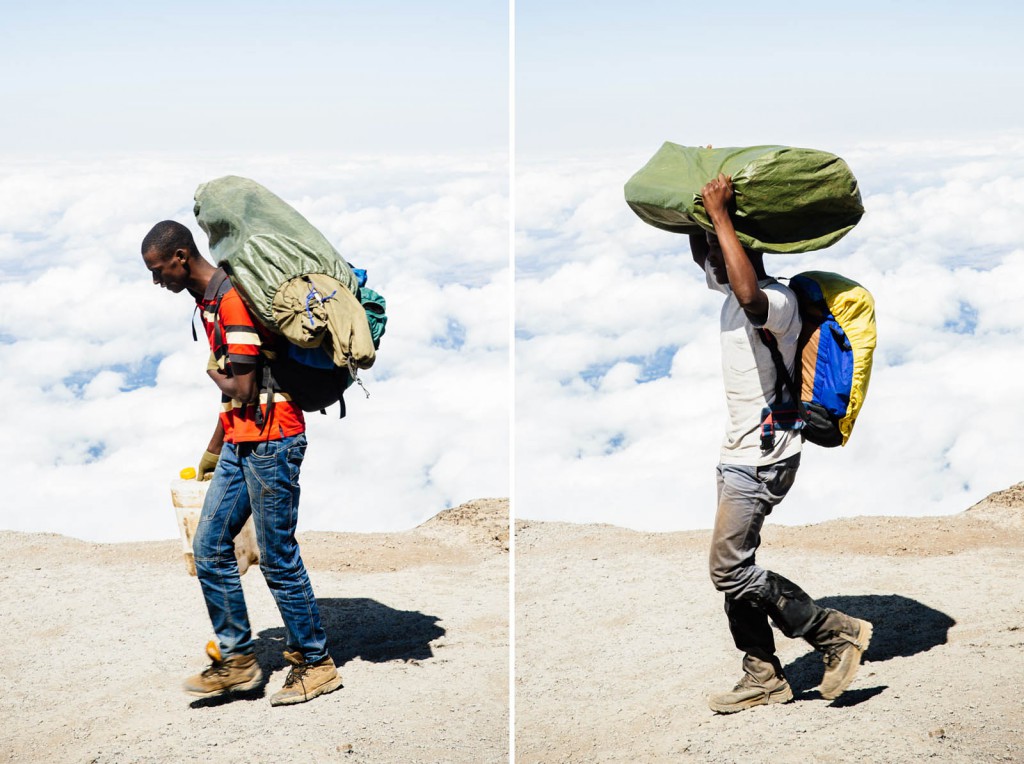
Our popular camp chef — “Dr Stomach” — is the most important guy in the group, our guides repeatedly enthused. Each day started with tea and coffee delivered to our tent door by our kindly “waiter”, the energetic Hassan Husseini. Hot breakfast followed, then a prepared lunch at midday. Snacks were constantly on offer, the best being home-made granola from Arusha-based bakery Mama’s Kitchen. Tea, coffee and popcorn were offered as late afternoon appetisers, and dinner came in courses — one of Dr Stomach’s signature soups, then a generous main dish like chicken. Bed was a thick mattress with a pillow — true luxury in these parts — topped with our down-filled sleeping bags. There’s nothing quite like the restorative power of a good meal and good night’s sleep, Temba believes. It showed for our team: our porters laughed, teased, high-fived, and sang traditional Tanzanian songs to us at the end of each day: rowdy, clapping songs that attracted the attention of other climbers. These guys had energy. And they passed that energy on to us.

After another agonizing march up the eternal staircase of Kilimanjaro, I tagged the first of the great mountain’s two summits, Stella Point (5235 metres). Fifteen minutes of picture-snapping later, our small group moved on, determined to keep the momentum going to the tip top, Uhuru Peak (5895 metres). It was rough going. “They call me Mr Almost,” teased my guide Malisa as I muttered to him to stop his refrain that we were almost there when we so weren’t. Uhuru is nearly an hour’s uphill slog from Stella, step-by-miserable-step. But my spirits rose when the first winks of Kilimanjaro’s sparkling white glaciers appeared.
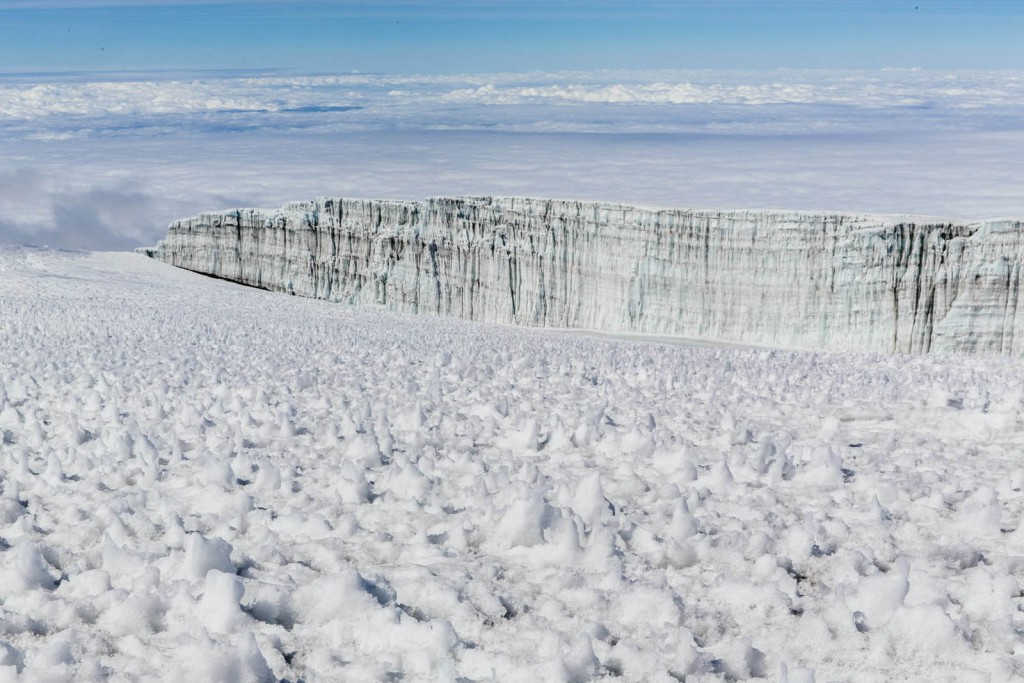
I’d been hearing for years about these majestic glaciers, the world’s only equatorial summit glaciers that are rapidly shrinking. A 2002 study published in Science gave the 11,700-year-old ice an expiration date sometime between 2015 and 2020. As in, right now. The culprits? Global warming, plus the deforestation of Kilimanjaro’s foothills. The loss of the forests’ humidity means a loss of moisture-rich wind blowing toward the glaciers, allowing evaporation (a process called sublimation). But this year, Mount Kilimanjaro National Park ecologists stated that the ice cap is nowhere near extinction. In fact, they believe that due to reforestation efforts, it’s holding steady. It’ll take more study to see if this is true, and revise the deadline for the glaciers. But for now, there’s still time to buy a plane ticket to Tanzania.
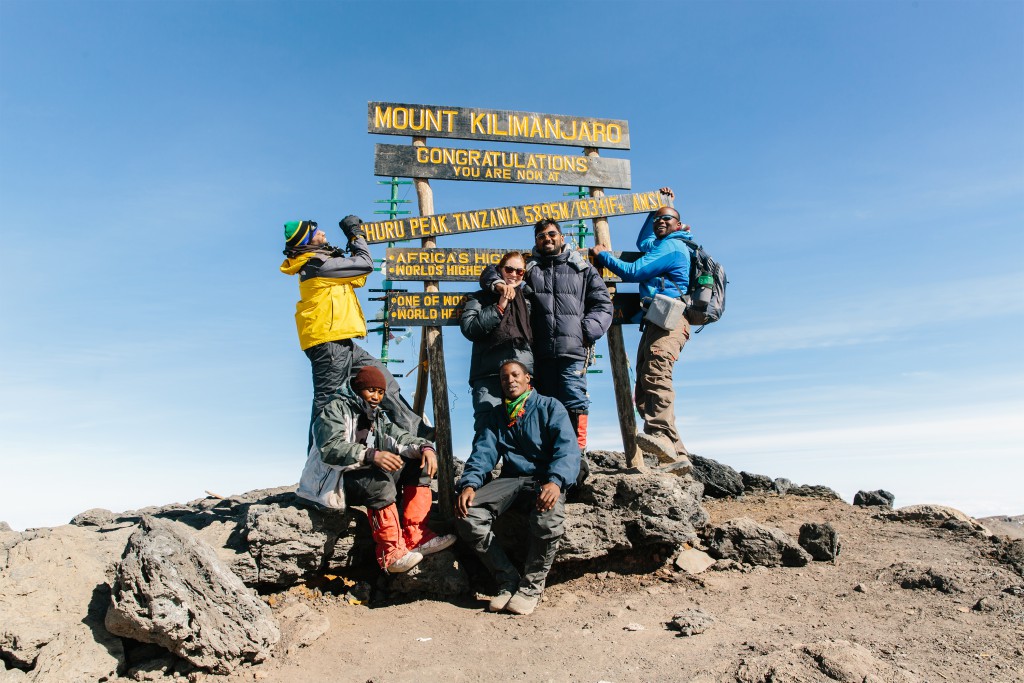
The last few metres were a blur. Finally, Kilimanjaro’s iconic signboard sprung into sharp relief. At the sight, I felt a surge of elation and energy. The breathlessness and muscle aches slipped away. My husband and I jumped in front of the congratulatory words, manic grins plastered across our faces. Our guides — as joyful as we were — leapt into the frigid air like action figures, posing for pictures. And nearby, standing witness to us and the thousands before, were the great glaciers. Ancient and imposingly large, they looked just as Hemingway’s simple words described them: “As wide as all the World, great, high, and unbelievably white in the sun…”
There they were. Here we stood. We had done it.
